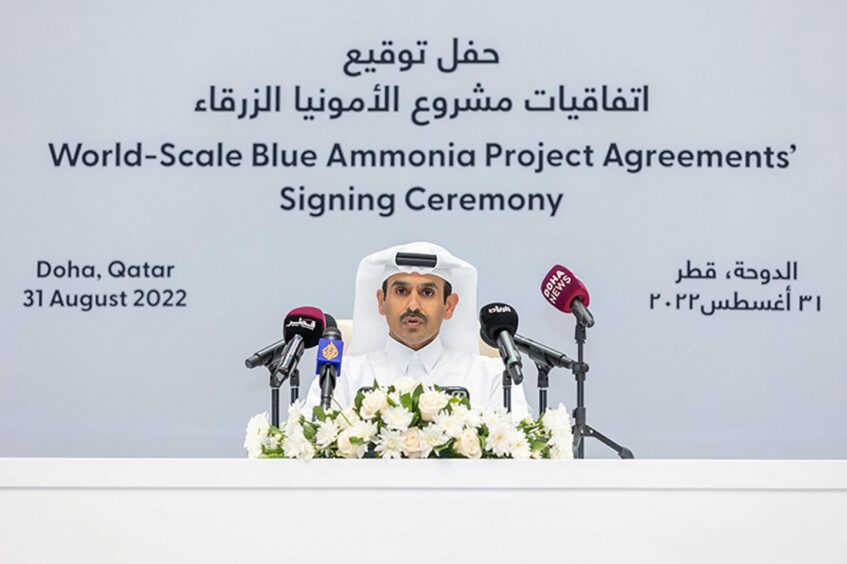 © Supplied by QatarEnergy
© Supplied by QatarEnergy QatarEnergy (QE) has launched plans for a world-scale blue ammonia project, with capacity of 1.2 million tonnes per year.
The company said the Ammonia-7 project would be the world’s largest such facility. QatarEnergy Renewable Solutions and Qatar Fertiliser Company (QAFCO) will back the plan, which aims to begin producing in the first quarter of 2026.
QE awarded an engineering, procurement and construction (EPC) contract on the ammonia plan to ThyssenKrupp and Consolidated Contractors Company (CCC). It said the contract was worth $1 billion.
QE president and CEO, also Minister of State for Energy Affairs, Saad Sherida Al-Kaabi said the project would be a “landmark” for Qatar and the industry.
“It builds on our expertise in installing, operating, and maintaining conventional ammonia plants to produce fertilizers. We are also building on our unique position in the renewables and carbon capture and sequestration (CCS) space, as well as on our ideal logistical capabilities and advantages to supply differentiated, low carbon products and fuels to the world.”
Also participating in the launch ceremony were Abdulrahman Al-Suwaidi, the CEO of QAFCO; Martina Merz, CEO Thyssenkrupp; Dr. Cord Landsmann, CEO Thyssenkrupp Uhde; and Oussama El-Jerbi, CCC Area Managing Director (Qatar).
Single train
Thyssenkrupp’s Merz said the company had a long relationship with Qatar. “With our proven technology and innovation expertise we are laying the foundation towards sustainable solutions jointly with our customers.”
Using Uhde’s ammonia technology, the single-train plant will have a record capacity of 3,500 tonnes per day, Thyssenkrupp said.
QatarEnergy Renewable Solutions will develop and manage the CCS facilities to capture 1.5 million tonnes per year of CO2. It will also secure 35 MW of renewable power from its solar plant in Mesaieed Industrial City (MIC).
The company will also oversee the certification process for the blue ammonia and be the sole offtaker and marketer of the product.
Qatar plans to capture more than 11mn tpy of CO2 by 2035.
